
Obwalden or Obwald is one of the 26 cantons forming the Swiss Confederation. It is composed of seven municipalities and the seat of the government and parliament is in Sarnen. It is traditionally considered a "half-canton", the other half being Nidwalden.

The Rudenz Castle is a fortified tower in Flüelen, a municipality in the canton of Uri in Switzerland.

Attinghausen Castle is a ruined medieval castle in the municipality of Attinghausen in the canton of Uri in Switzerland. It is a Swiss heritage site of national significance.
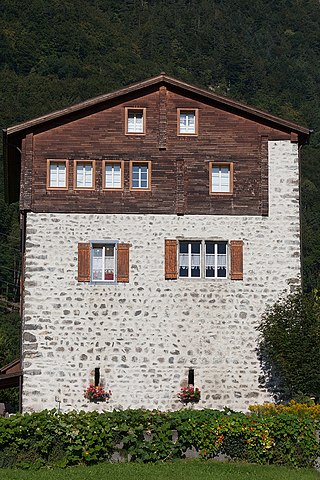
Schweinsberg Castle or Schweinsberghaus is a fortified house in the municipality of Attinghausen in the canton of Uri in Switzerland. It is a Swiss heritage site of national significance.

Brandis Castle or Maienfeld Castle is a castle in the municipality of Maienfeld of the Canton of Graubünden in Switzerland. It is a Swiss heritage site of national significance.
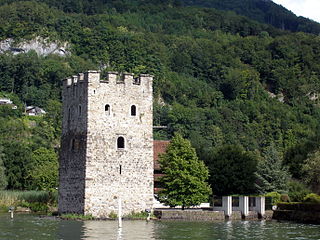
The Schnitzturm is a stone tower in the municipality of Stansstad in the canton of Nidwalden in Switzerland. It is part of the Teller / Palisaden medieval fortifications which are a Swiss heritage site of national significance.
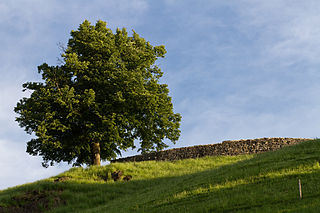
Rotzberg or Rotzburg is a ruined castle in the municipality of Ennetmoos in the canton of Nidwalden in Switzerland.

Landenberg Castle is a ruined castle atop a hill in the municipality of Sarnen in the canton of Obwalden in Switzerland. In the 18th century an armory and firing range were built on the site. The Landenberg Armory is a Swiss heritage site of national significance. The ruins of the castle was the meeting place of the Landsgemeinde or Cantonal assembly for over three centuries.
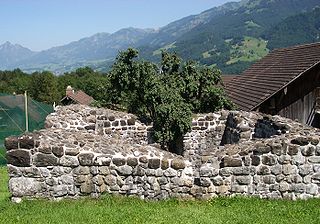
Rosenberg Castle is a ruined castle in the municipality of Giswil in the canton of Obwalden in Switzerland.

Spliatsch Castle is a ruined castle in the municipality of Surses in the Albula Region in the canton of Graubünden in Switzerland.

Alt-Süns Castle or Alt-Sins Castle German: Ruine Alt-Süns is a ruined castle in the municipality of Domleschg in the Viamala Region of the canton of Graubünden in Switzerland.

Neu-Süns Castle, Neu-Sins Castle or Canova is a ruined castle in the municipality of Domleschg in the Viamala Region of the canton of Graubünden in Switzerland.
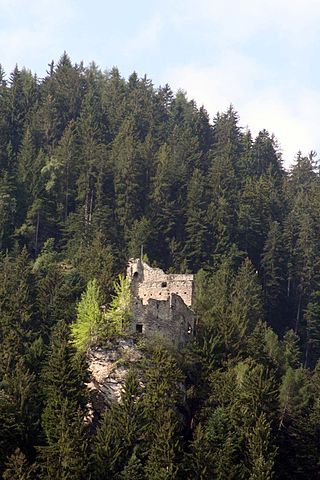
Obertagstein Castle is a ruined castle in the municipality of Thusis of the Canton of Graubünden in Switzerland.

Grottenstein Castle is a ruined castle in the municipality of Haldenstein of the Canton of Graubünden in Switzerland.

Klingenhorn Castle is a ruined castle in the municipality of Malans of the Canton of Graubünden in Switzerland.
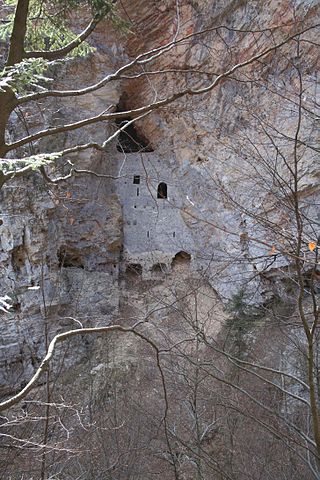
Rappenstein Castle is a ruined castle in the municipality of Untervaz of the Canton of Graubünden in Switzerland.

Canaschal Castle is a pair of ruined castles near Trin, Canton of Graubünden, Switzerland.

Grüneck Castle is a ruined castle in the municipality of Ilanz of the Canton of Graubünden in Switzerland.

Castelberg Castle is a ruined castle in the municipality of Ilanz/Glion of the Canton of Graubünden in Switzerland.
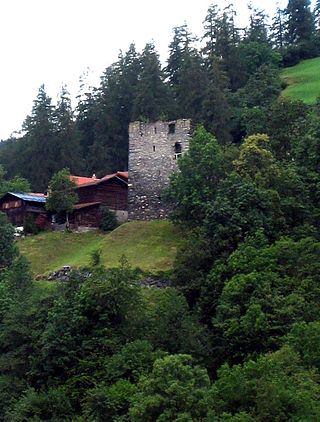
Bernegg Castle is a ruined castle in the village of Calfreisen in the municipality of Arosa of the Canton of Graubünden in Switzerland.






















